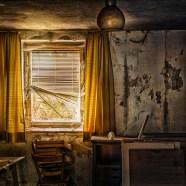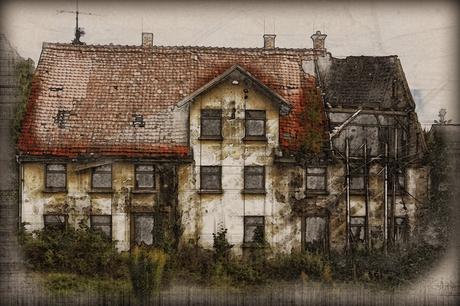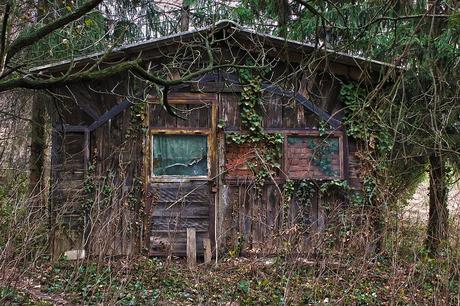
Tags
Ask the vast majority of people if they would prefer to live in a beautiful, quaint, unique home or a cookie cutter designed modern house, and you can almost guarantee they will plump for the former. Older homes and properties have an air of romance, and of course, we still hear the phrase 'they don't make 'em like they used to' on a regular basis.
On the opposite side of the spectrum, modern homes seem to have an incredibly bad rep. It's easy to see why. After all, they are often built in areas that may have once been a beautiful green space or a popular area that has been bulldozed away - along with the local's memories. And let's face it, there are plenty of new homes that look identical - just rows and rows of unspectacular sameness.
However, the truth is that while old homes might be good to look at, they often come with a lot of baggage. And if you are in the market for your first ever house, it might be a good idea to buy contemporary rather than vintage. Here are some of the reasons why the buyer should beware of the old, and embrace the new with a little more appreciation.

Builders of days gone by were undoubtedly good at what they did. Old homes were built to last , designed beautifully, and put many modern houses to shame. The trouble is that if you scratch beneath the surface, there is likely to be a multitude of problems. In the olden days - or the golden years, if you like - standards for plumbing, wiring, heating, window fitting, roofing and insulating were nowhere near what we enjoy today. And the worrying issue is that these problems are not inexpensive to fix. Your old home may stand tall for another century, but on the inside, it could be in a constant state of repair, unless you can afford to gut the place out and start again - which may not be possible. Why? Let's find out...
Homes of a certain age, or from a specified period, or that have a particular style can have numerous levels of protection. Planning permission to upgrade, renovate and remodel ancient houses is often extraordinarily difficult to get. You may have to put up with sash windows forever. You might not be able to break down a wall to update your 100-year old plumbing. And if you haven't taken these issues into account before buying a house, you could be in a tricky position.

Because older homes tend to be less well insulated, slightly beaten up, and, perhaps, have no central heating, they are often expensive to run. An old house in the country , for example, may be heated by oil that you have to store in a tank outside. You might have a septic tank, too, which requires emptying - an expense you will pay for. And even niggly little things like uneven doors, windows and floorboards could lead to a severe amount of draft. So, even if you do have a modern luxury like central heating, the dial will often be up to the limit to get any kind of effect.
Old habits that die hard
Building safety has clearly come a long way over the past few decades. And if you are buying an old home, there are a few issues you may come up against that are a remnant of less enlightened times. We've already discussed issues like plumbing and electrical wiring, but other problems are often apparent. Check the attic or loft areas, first. Is the insulation made of asbestos? If so, you will need to get it professionally removed. Bear in mind that older homes were often decorated with lead paint, too, which can be incredibly dangerous - not only can it be present on walls, floors, and ceilings, but it can also get into your garden soil. If there is no record of lead paint testing in your new ownership deeds, it's a good idea to get a professional to have a look. Don't forget, lead paint was in widespread use all the way up to the 1960s, which isn't all that long ago in terms of housing.

Old homes are also far more likely to have infestation problems than new homes, too. Termites are one of the most common and can get almost anywhere that has wood or wood-based components. Check your floors for signs of buckling, and look for tiny holes on drywall, floorboards, and wood supports. Bubbling and peeling paint can also be a sign of termites or other small pests. If you do notice anything wrong, the likelihood is that you will need to hire a pest control company to go to work - and the sooner, the better. If you are lucky, it will only result in a few cosmetic fixes. But in some cases, it could end up with severe structural damage.
All homes suffer from excessive moisture at some point. But these are issues that tend to get worse over time and are far more common in old houses than they are in new ones. Moisture seeps through cracked foundations and leaking pipes , and a lack of airflow creates the perfect breeding ground for mould. It's a lot more serious than you might think, too. If you are planning on having kids in the future, damp can be incredibly dangerous - it can cause more problems for anyone with respiratory conditions such as asthma, especially in those that are young, elderly, or infirm.
OK, so there you have it. As you can see, there are plenty of issues to watch out for - and, inevitably pay for - when you buy an old house. So if you are a young person or couple thinking about getting your foot on the ladder in the not-too-distant future, think carefully before buying that cute Tudor house. Modern, cookie-cutter homes may not have the sex appeal of older homes, but they are all built to reasonable standards and will save you a lot of money in utility bills.

